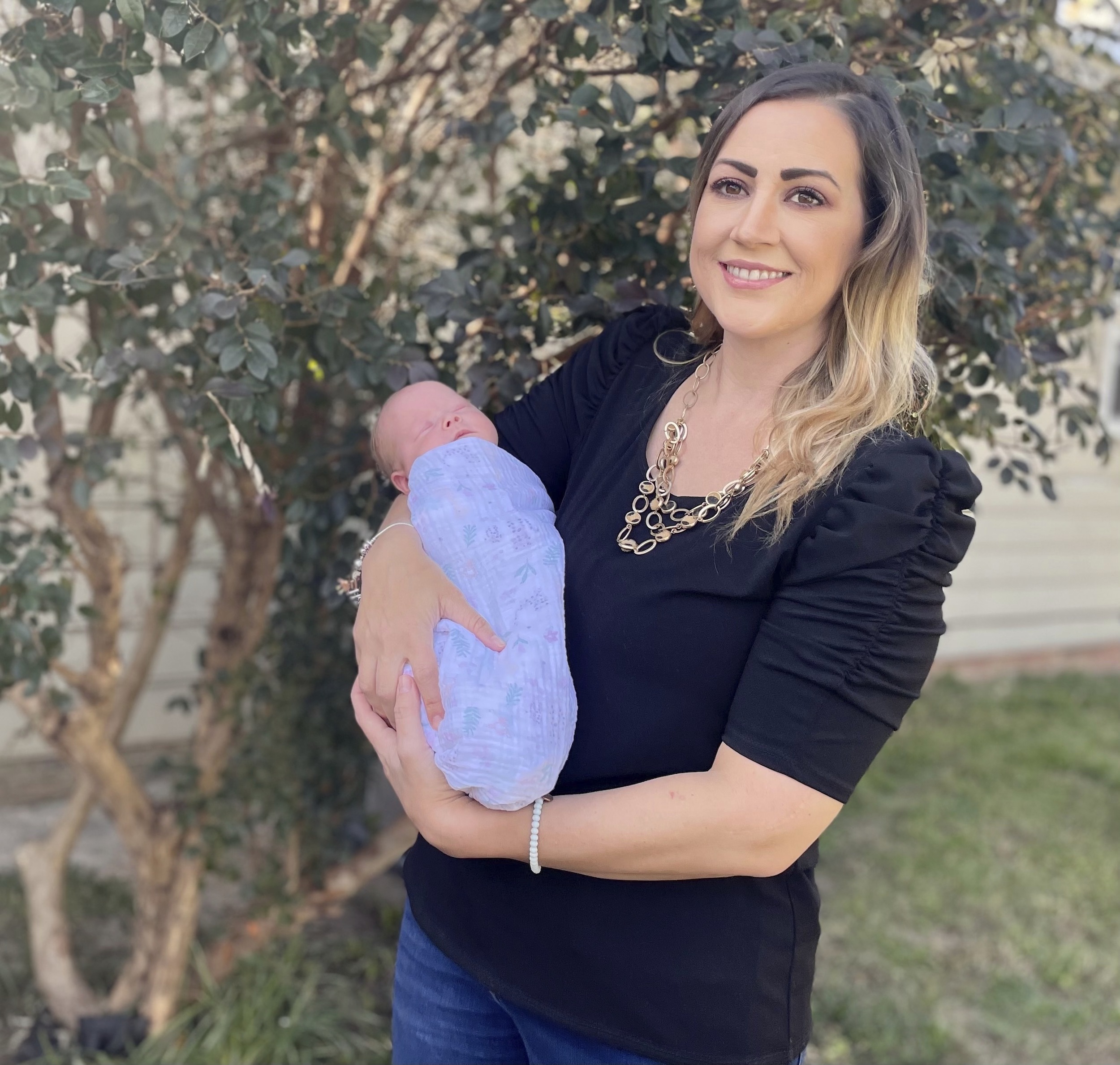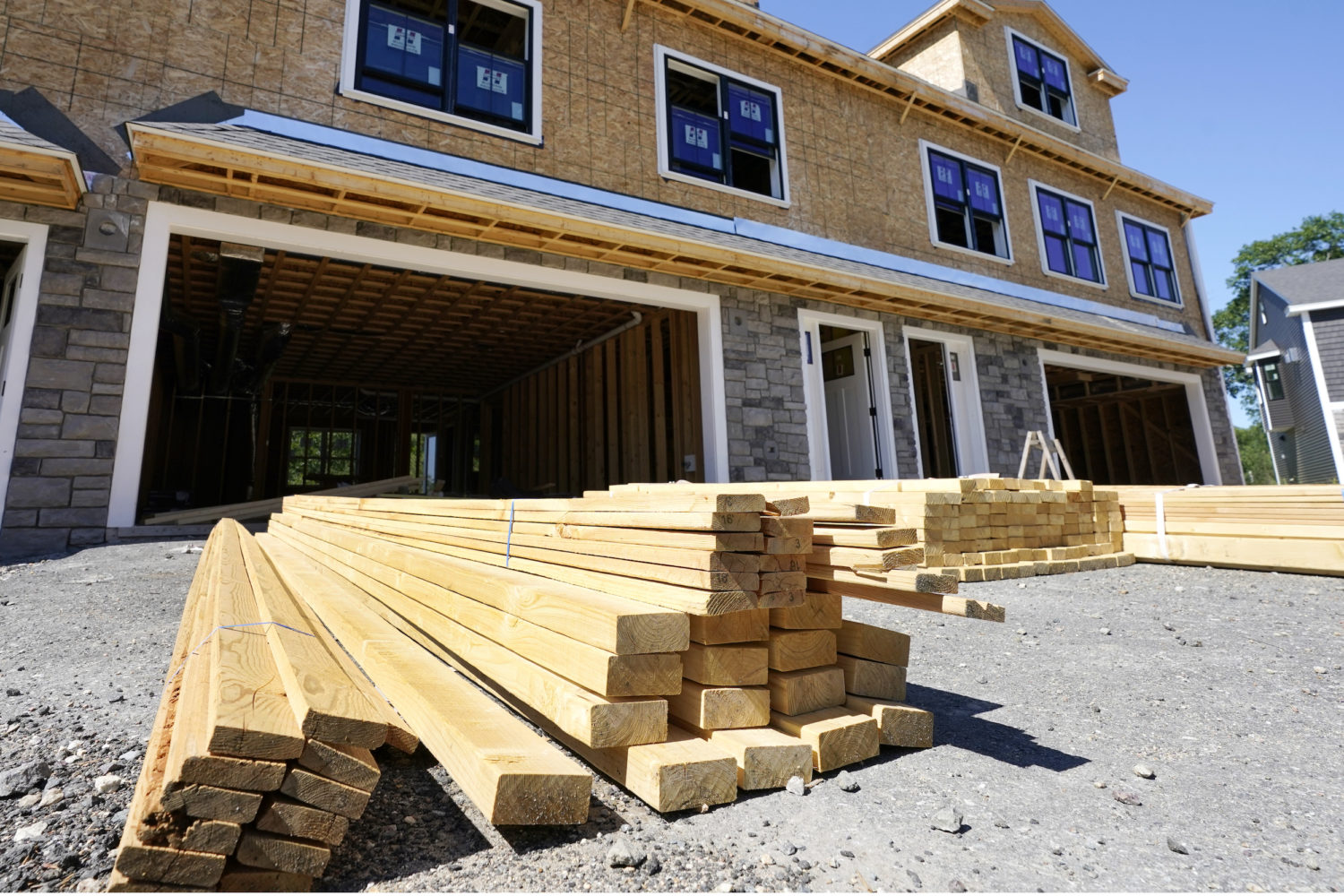 Covering COVID-19 is a daily Poynter briefing of story ideas about the coronavirus and other timely topics for journalists, written by senior faculty Al Tompkins. Sign up here to have it delivered to your inbox every weekday morning.
Covering COVID-19 is a daily Poynter briefing of story ideas about the coronavirus and other timely topics for journalists, written by senior faculty Al Tompkins. Sign up here to have it delivered to your inbox every weekday morning.
The United States is preparing to double a tariff on Canadian softwood, which will touch off another battle that will make lumber more expensive. Right now, lumber future prices are about twice what they were before the pandemic began and supplies in the southern U.S. are getting tighter. That will drive up prices even more.
This disagreement between neighbors has to do with allegations that the U.S. has made for years that Canadian wood is unfairly subsidized, which makes it cheaper for U.S. buyers but forces down U.S. lumber. This battle has been going on since Ronald Reagan was in office. In 2017, Donald Trump imposed tariffs on Canadian lumber and now, with supplies tight and people hollering about the rising price of everything, the U.S. Department of Commerce says it plans to raise duties from the current 9% to 18.3%.
The New York Times explains the historic battle:
The United States and Canada have been at odds over lumber since the 1980s. The saga has gone on for so long that lumber disputes over the years are commonly referred to with Roman numerals, akin to the Super Bowl. The current dispute is called Lumber V; Lumber IV took place during the George W. Bush administration.
The friction between the United States and Canada over softwood lumber stems in large part from the differences in how timber is harvested in the two countries. While most timberland in the United States is privately owned, most of Canada’s forestland is publicly owned, and companies pay fees set by provincial governments to harvest timber from their land.
While Canadian lumber mills have profited recently, the governments have kept lease rates low, which makes it more difficult for U.S. producers to compete.
Lumber prices have taken a roller coaster ride in the last year and a half. In the spring of this year, prices spiked, then dropped and are now heading back up. In some cases, homebuilders say, the cost of building a house went up $35,872 just because of the price of lumber. The National Association of Homebuilders says when you consider the cost of lumber for companies who are building apartment complexes, “Tenants are paying $119 more a month to rent the average new apartment due to the past year’s surge in lumber prices.”
The U.S. Lumber Coalition claims:
Canada’s lumber subsidies are threatening America’s Main Street economy. This is an issue of jobs, fairness in trade and economic stability for thousands of communities and hundreds of thousands of hardworking families across the U.S.
Canadian lumber mills receive government subsidies, among them below-market harvesting fees from publicly owned land. Canadian softwood lumber producers unfairly outcompete American producers and dump their artificially cheap softwood lumber in the U.S. market, putting U.S. lumber mills — which, unlike Canadian Mills, operate under a free market — at a fundamental competitive disadvantage. Because of unfair trade, U.S. mills lose sales, causing difficulty in maintaining production and employment levels. This harms communities all across the country and damages the overall U.S. economy.
One-third of pregnant women are vaccinated

Amanda Harrison holds her baby, Lake, outside her mother’s home in Phenix City, Ala., on Monday, Oct. 18, 2021. Harrison was put on a ventilator and later life support after becoming ill with COVID-19 in her third trimester of pregnancy. Doctors delivered Lake at 32 weeks and put Harrison on life support. Harrison, who was unvaccinated, is urging pregnant women to get vaccinated for COVID-19. (AP Photo/Kim Chandler)
Just under a third of pregnant women in the U.S. are vaccinated. The Mercury News looks behind this startling statistic:
Only 31% are vaccinated against the dangerous COVID-19 virus, less than half the 69.7% vaccination rate of other U.S. adults and even lower than traditionally resistant groups, such as young men, low-income rural residents and conservative Republicans.
This startling vaccination gap is alarming experts because pregnant women with COVID are at elevated risk of severe illness. Compared to nonpregnant women, they’re more likely to end up on a ventilator. And their infants face higher odds of premature birth.
“Because of COVID-19, some children will grow up without their mothers,” said obstetrician-gynecologist Dr. Dana Meaney-Delman, the U.S. Centers for Disease Control and Prevention’s lead scientist for maternal COVID-19 immunization.
98% of seniors have gotten vaccinated in the US
This number surprised me, maybe because we give so much press to people who don’t get vaccines. Medscape reports, “Nearly 98% of the over-65 population has received at least one COVID-19 shot and more than 25% of them have gotten boosters, just weeks after they were authorized.” The reporting says that vaccinated people tend to urge others to do likewise, including their children.
Troops who refuse vaccines may lose veteran benefits
Defense and Veterans Affairs officials warn that members of the military who refuse to take the COVID-19 vaccination may lose veteran benefits. Military Times reports:
Instead, decisions on whether to give those individuals other-than-honorable discharges — potentially blocking them from a host of veterans benefits — will be left to local commanders, and their cases won’t receive any preferential evaluations for veterans’ benefits eligibility, despite recent lobbying from Republicans lawmakers for a less punishing approach.
The Pentagon has imposed a Nov. 22 deadline for all civilian DoD employees to be fully vaccinated, but the various branches of service have implemented their own, separate vaccine deadlines.
The Air Force had a Nov. 1 deadline for receiving at least one dose of a COVID-19 vaccine, the most aggressive deadline amongst the different military service arms. They announced yesterday that 97 percent of its active-duty component of airmen and Space Force guardians had received at least one dose of a COVID-19 vaccine.
The long history of concert crowd deaths

Shadows of visitors for a memorial to the victims of the Astroworld concert are cast on the sidewalk in Houston on Sunday, November 7, 2021. (AP Photo/Robert Bumsted)
The deadly crowd crush at Astroworld joins a long list of concert tragedies, from stage collapses to fires and mass shootings. The important investigations that follow these deadly events have changed fire and safety laws in America.
NPR produced a list of some of the more noteworthy deadly concerts. The 1977 Beverly Hills Supper Club fire killed 165 people. It eventually led to national fire safety laws, including the lighted exit signs and posted occupancy limits that you see in every commercial building now. The following fire laws also required fire alarms in buildings with large gatherings. The 2003 fire at The Station nightclub in Rhode Island led to new requirements for sprinkler systems and tight controls on pyrotechnic displays.
I remember covering a fatal concert crowd crush in Nashville in 1987. An unexpectedly large crowd there tried to force open doors that were chained shut. Two people died; many others were trampled.
CNN collected an interesting look at how, over the years, other performers have stopped shows and quelled raucous concert crowds.
In one city, 5-year-olds will soon have to show proof of vaccination
San Francisco’s local mandate will soon require children as young as 5 to prove they have been vaccinated against COVID-19 to enter restaurants, entertainment venues and sporting events. San Francisco Health Officer Susan Philip says the requirement will kick in after about eight weeks to give children’s families time to get the kids vaccinated.
The times in which we live, part 1
The progress toward vaccinating the planet sometimes seems to move slowly, but it is moving. Consider this:
For those who don’t want more good COVID news, please skip rest of this tweet
Still here?
OK
Sometime in past 24 hours, we surpassed 50% of humanity with at least 1 shot of a COVID vaccine
There are now more humans who’ve gotten a vaccine than humans who have not
Progress! pic.twitter.com/BCZ3S3aQcx
— Ashish K. Jha, MD, MPH (@ashishkjha) November 5, 2021
Employers say they need workers, but applicants say they apply and hear nothing
You hear it everywhere: Employers say they need workers. But workers say they apply and never hear anything. Recode summarizes it:
There’s no single party to blame here. Corporate hiring practices can be convoluted and too reliant on machines, and many applicants aren’t being realistic or strategic enough in their work search efforts. For employers, job seekers, and the American economy in general, it’s worth figuring out what’s going on and addressing it. Because although these trends have been exacerbated by the pandemic, many of them pre-date it, and they’re not going away.
“We think that we made it easier 20-something years ago when Monster started posting jobs. It makes it easier for the employer, it doesn’t make it easier for the job seeker,” said J.T. O’Donnell, the founder and CEO of career coaching platform Work It Daily, who runs a popular TikTok account with work advice. “You’re not getting rejected, you’re just never getting past the technology.”
Sometimes, what the software is scanning for doesn’t even make sense — as the Wall Street Journal recently noted, it will look for registered nurses who also know computer programming when really they just need data entry.
Foreign buyers buying American farmland
Progressive Farmer points out that 22 states have laws banning foreign or corporate farmland ownership, so corporations create shell companies to obscure who owns the land. The story says:
USDA’s Farm Service Agency issues annual reports on foreign ownership of land, which show steady increases over the past two decades.
At the end of 2019, the Agency showed 35.2 million acres as being foreign held, about 2.7% of all agricultural land nationally. In 2004, foreign persons owned 14.6 million acres, or about 1% of agricultural ground. Today, Texas has the most foreign-held acres, at 4.4 million. Maine is second, with 3.3 million acres; Alabama is third, with 1.8 million acres.
While Chinese land ownership draws the attention, it is, in fact, Canada that owns the most U.S. farmland, at 7.48 million acres. This number includes 2.27 million acres of cropland and 4.7 million acres of forest.
In less than a decade, China’s stake in American farmland has grown exponentially. Records from the Agricultural Foreign Investment Disclosure Act show that Chinese acquisitions “rose from less than 10 annually” before 2008 to “12 to 25 each year during 2008-13.” In 2007, China bought six farms, all in California. The next year, they had bought 30 outside California, in Arizona, Texas and Missouri.
This strategy, outlined in an official Chinese Communist Party (CCP) 2013 food security initiative, encourages Chinese companies to gain greater control over agricultural supply chain imports. Moreover, Beijing has backed up this priority financially, utilizing its assorted state-connected financial institutions. The Agricultural Bank of China has stressed that it has “fully met the financial needs of the ‘Going Global’ of enterprises in agricultural cooperation.”
These acquisitions, and other smaller ones, highlight that China is slowly but surely gaining control of parts of the American food supply.
COVID-19 infected deer, no threat to humans

A pair of young antlered deer graze on the edge of the woods in a frost-covered field, Saturday, Nov. 6, 2021, in Zelienople, Pa. (AP Photo/Keith Srakocic)
I wanted to be sure, right there in the headline, that we don’t spread a rumor that deer are giving COVID-19 to humans. They are not. But for some time now, scientists have been aware that the virus is showing up in deer and it seems to spread from deer to deer. In Iowa, a third of deer tested during the fall and winter of 2020-21 tested positive for COVID-19. The researchers assume the deer somehow got the virus from humans then passed it among their herds.
The New York Times explores how this human-to-deer transmission might have happened:
How the virus passes from people to deer, however, is not entirely clear. Rachel Ruden, Iowa’s state wildlife veterinarian and an author of the study, said there were plenty of opportunities for transmission given that 445,000 deer roam the state.
The virus can spread when people feed deer in their backyard, through sewage discharges or maybe when an animal licks a splotch of chewing tobacco left behind by an infected hunter. “Perhaps it doesn’t take much of a loading dose to get deer infected,” she said. “But either way, all of this is a striking example that we’re all in this pandemic together.”
Why should you care? The researchers say there is reason to think the virus likely has infected deer in every place that deer live in the U.S. And even when we get control of the virus, if the virus keeps moving among animals like deer, it could eventually make it back to humans.
The solution to car-deer crashes: wolves
Consider this data just involving Wisconsin, then imagine what the figure is nationwide. The Atlantic points out, “On average, 19,757 Wisconsinites collide with deer every year, leading to about 477 injuries and eight deaths.” That’s why some researchers say if we had more wolves, we would have fewer car-deer collisions. The wolves don’t just eat the deer, they keep the deer away from roads, researchers say.
The times in which we live, part 2
Man, wait until antivax politicians find out about how R2-D2 and C-3PO tried to encourage vaccination… in 1978. Almost like this isn’t a new thing and programs that cater to kids want to keep them safe and healthy. pic.twitter.com/Q5nfH5TVsj
— Dr. Tara C. Smith (@aetiology) November 7, 2021
The lesson here is that celebrities, real and imagined, have delivered public service messages for decades. Disney characters sold war bonds in World War II. A cartoon bear helps prevent forest fires. So when Big Bird backed COVID-19 vaccines, he/she/they was just doing what celebs do.
We’ll be back tomorrow with a new edition of Covering COVID-19. Are you subscribed? Sign up here to get it delivered right to your inbox.







